As with so many consumer products nowadays, selecting a projector can be a walk in the park once you’re armed with the correct advice –there are so many alternatives. Selecting the right projector is actually a simple process if you’re familiar with these requirements.
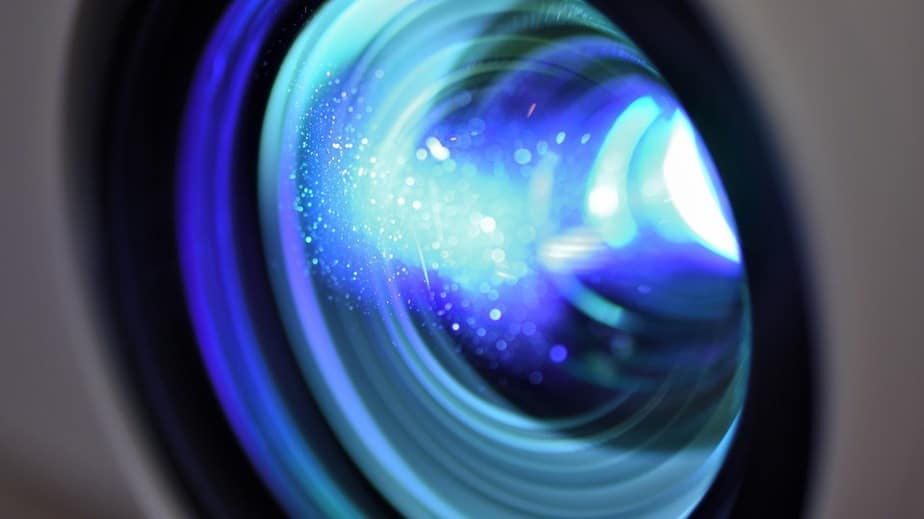
At this point you might well be thinking,”Great. But I can not answer any of these questions” Or,”I plan to shoot my projector on the street and could use it everywhere” Frequently, with just a little forethought, the”I don’t understand” may be whittled down into a educated guess. Otherwise, you are not completely out of luck. In fixing each topic, we’ll suggest your best bet when faced with unknowns.
What’s a home theater projectors?
A projector may be best looked at as an inverted camera, even spitting light out of a lens as opposed to receiving it. For the sake of this Purchasing guide, we will be thinking about digital projectors–which is, projectors with video inputs which serve a similar purpose to a TV or monitor when supplying many advantages, which may comprise:
- Larger image sizes
- Increased portability
- Adaptive installation chances
- The fundamentals I shall outline below apply to all types of projectors. But it will assist to start by dividing electronic projectors into four categories:
- Pocket, now also called”pico”
- Home Entertainment
- Multimedia
- Enormous venue and mended installation (a subset of multimedia)
Obviously, there will be overlap, rather than all models will fit easily in to a specific category. As an example, home theatre and multimedia projectors are quite similar. Generally, it is going to soon be evident from your application that type you need. Boardroom presentations: that will probably be multimedia. In a living room: HomeTheater.

Pocket projectors are ultraportable, some not much larger than a smartphone, some mimicking miniaturized multimedia projectors. They are best considered a replacement a computer screen or small television you’ll be able to shoot with you. As they typically utilize LED lamps in order to avoid high energy intake and bulky cooling systems, which they give you in reliability that they sacrifice in image size. Brightness will be discussed at length below, but for the sake of contrast, pico projectors on average vary from 25 to 1500 ANSI lumens, where as adequate multimedia projectors start at 2500 lumens. In addition they have a tendency to lack optical zoom, which means that you will need to become flexible with your projector positioning to achieve the desirable image size.
AAXA Technologies WVGA Pico Projector
Multimedia Projectors
Multimedia projectors represent the most significant category, and also therefore are the most frequently sold in B&H. Multimedia projectors are general purpose, and therefore are used for all by giving PowerPoint presentations to screening movies and slideshows at weddings. They are typically considered portable, weighing out of 3 pounds for the ultra-slim models and increasing out there. Their brightness tends to include 2500 to 4500 lumens roughly. They virtually will have zoom lenses; however, the zoom range is usually shorter than the majority of their HomeTheater counter parts: 1.2x to 1.5x (when compared with 2x in the home theater realm). What this means is special attention needs to be removed whenever choosing, to make certain the screen size is compatible with the projector’s throw ratio. Multimedia projectors provide a range of input signal. Many also encourage interactive and wireless presentational functionally, as well as the capacity to provide presentations without a laptop or computer keyboard.
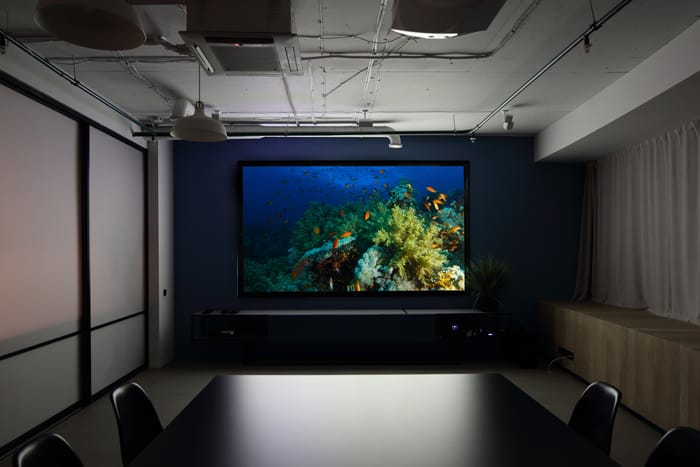
Multimedia projectors tend to follow computer (VESA) resolutions as opposed to SD or HD video resolutions. These settlements included SVGA (800 x 600), XGA (1024 x 768), WXGA (1280 x 800), along with WUXGA (1920 x 1200). The very widely used resolution is WXGA, and is well suited to PowerPoint presentations, as well as high-definition video.
Short Twist Projectors
An important sub category of multimedia projectors is short throw and ultra-short throw. The very common throw ratios would be 0.5:1 and 0.3:1, with the latter fulfilling the distinction of being”ultra-short throw” Short throw projectors almost never have zoom lenses also, at the cases of ultra-short throw projectors, utilize a mirror onto which the image is proposed original, before being revealed at the screen. They give themselves to wall rather than ceiling lifting, and are made to be installed very near the screen: 18 inches to two feet. Short-throw projectors are ordinarily utilised in classrooms, and therefore are ideal for pairing with digital whiteboards. An individual may be tempted to place a quick throw projector further back than the recommended couple of feet to attain an extremely large image in a little space (assuming sufficiently low ambient light degrees ( naturally ). This will most likely not work, since short-throw projectors keystone severely when used outside their preferred throw distance range, and will require some rather creative mounting to create an undistorted image. In the event you demand a brighter projector and have limited space, you will need to look at a fixed installation projector with interchangeable lenses rather than Watch the Epson PowerLite 675W for an instance of an ultra-short-throw projector, shown having its separately sold wall mount.

Authentic home theater projectors–as opposed to multimedia/home theater cross overs, which from the feature view can be medicated just as multimedia projectors–place the accent on image quality above everything else. They run lower brightness–say 1-800 lumens average–and have the maximum zoom of any projector type which features builtin lenses.
Home theater projectors often feature low-impact controller (LVC), in order that turning the projector off or on can trigger the screen to rise or descendopen and close if it is a fixed framework covered by curtains. To accomplish the quietest possible operation, they do have significantly more efficient–or more elaborate–cooling systems, which makes them relatively bulky and, sometimes, not able to aid inverted (upside ) installation. They have been also the family kind of projector, comparative to specifications. All are Full HD and several are 4K (authentic DCI 4096 x 2160 4K( in reality ). Be mindful, though. Businesses often bulge what are essentially restyled multimedia projectors to the house entertainment category. Tell tale signs of faking are high-lumen ratings (more than 3000 lumens), VESA as opposed to HD video native resolutions (such as WXGA and WUXGA), and zoom that is shorter than 2x.
If you want a fantastic picture, can filter all ambient light, and are working together with a screen size up to 100 inches roughly, home theatre projectors are a excellent option. Otherwise, you may be better served having a brighter multimedia projector, even in the event that you plan to utilize it at a house theatre setting.
Admittedly, 4K has not gained ground as quickly in projectors as television and computer monitors. With most LCD and DLP chips being produced for the A/V instead of consumer economy, likely the pressure for pushing the bounds of resolution just isn’t there. The Epson PowerLite Home Cinema 5040UB, as an instance, includes a”pixel-shifting” technique that fosters its apparent resolution beyond the 1920 x 1080 pixels of each of its three LCD chips.

Can Be 3D still “anything?”
Gadgets manufacturers publicly admit they’ve given upon 3D. You could still wish 3 d. If this is the case, you’re probably going to need to look for a home theater projector. Many multimedia projectors purport to be”3D-ready”–in the majority of instances, this means that the feature”DLP Link,” a 3D technology which just works with select monitors cards and software. Home theatre projectors tend to be more likely to provide what you need, HDMI 3D support so it is possible to use them with Blu-ray players. When spec’ing for 3D, keep in mind that you’re effectively cutting the brightness in half. Alternatively to buying a 3D-ready projector, you might even work with a combo of two-projector”stacking” and polarizing filters. In this case, a unique processor is required to demux the abandoned – and – right-eye flows from the HDMI signal.
Fixed-Installation along with Large-Venue Projectors
Fixed-installation along with large-venue projectors in many cases are contained as well as multimedia projectors. They are the cleverest type available in the consumer market, starting around 4500 lumens and moving upwards to 20,000 or more. Installation projectors are generally not considered portable, and require time to establish. In most cases, they comprise interchangeable-lens methods, making them the most flexible in terms of throw distance. They’re typically utilised in lecture halls, concert halls, houses of worship, stadiums, and other similar settings that need screening for large collections. Along with large screen sizes, they are used in settings where ambient light can’t be controlled. Many also encourage”piling up,” meaning the output signal from at least two projectors can be aggregated to increase the brightness beyond what a single projector could achieve. Instead,”edge blending”–the projection equal to a video walls –can be utilised to improve the complete resolution or make custom aspect ratios.
Due to these weight and also the essence of the lens systems they utilize, generally, installation projectors should really be spec’ed by an integrator, and require installation by a professional.

Now we arrive at implementing the three pieces of advice mentioned earlier.
Or: What is throw ratio?
Projectors have a very important specification known as”throw ratio” Throw ratio is really a specification That’s determined by the first two pieces of information in the equation:
Just how far may be your projector is from the monitor (throw distance)?
For example:
The first step in selecting a projector, therefore, is pinning down how wide the screen is and how far the projector could be placed from the screen–once you have completed this, the options will narrow significantly. Of course, you might have flexibility. Maybe your distance permits one to mount the projector anywhere you need on your ceiling. In cases like this, while you could technically be able to choose any projector that you want, you should consider mounting the projector as near to the monitor as you can. In lay man’s terms, the closer you can mount it, the fewer lumens that you’ll need to work out a clear image. At the other extreme is an instance where you’ve got a current mount installed on the ceiling you would like to re install. In cases like this, you will need to find a projector which features exactly the throw ratio ordered by the position of the bracket relative to the width of this screen.
Screen Size
Projector displays merit a whole buying guide of the own. But at this point, many of you is going to be wondering,”If I am starting from scratch, just how should I understand very well what screen size to buy?” An instant, and very demanding, rule of thumb would be to multiply the exact distance of their”least-favored viewer”–i.e., the person farthest from the screen–by 1/5. Thus, if your LFV is likely to be sitting 50 feet off, you’re going to want a screen that is 10 feet high.
But what if you don’t know? Or imagine if the projector is used on the go? Every attempt ought to be designed to find out, because there is not any”standard” throw ratio, nor is there a more standard screen size. On paper, multimedia projectors together with builtin lenses do not appear to alter substantially. They mostly include somewhere between 1.3:1 to 3:1, where as a fixed installation projector with interchangeable lenses could have lens options which range from 0.8:1 upto 15:1. You might have decided, since they’re about the same, to risk it. This might work, but remember that even exceeding by just a foot onto a 10-foot screen may lead to a critical part of the presentation being take off.
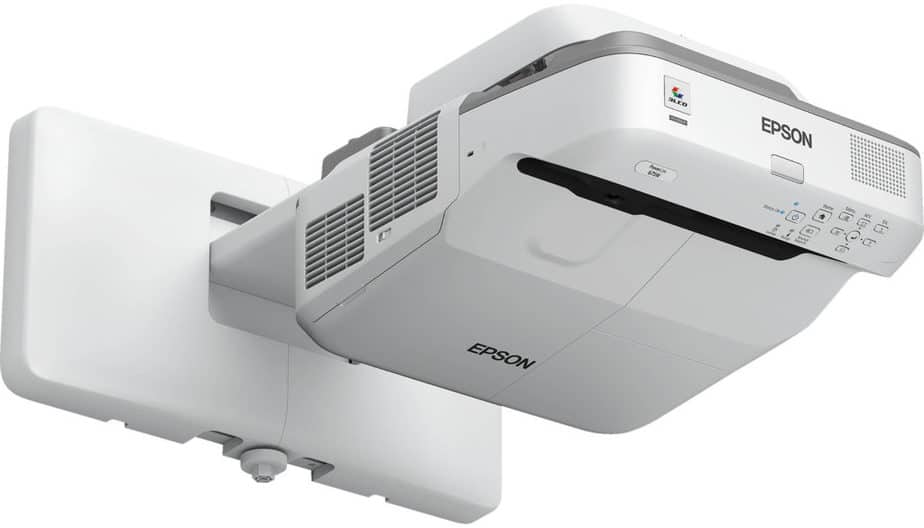
In the event that you really can’t find out, you’ve got two options: spring up for a version with more zoom–that may surely cost more–or err on the side of shorter throw. Perhaps not true short throw, actually –people don’t possess zoom and they keystone excessively if not carefully put. But something closer into the 1.3:1 end of the spectrum. Why? Because often, getting the projector closer to the screen will probably soon be less of an issue than getting it farther away.
In the end, keep in your mind, throw is situated on indigenous aspect ratio. If, for some reason, you are putting the projector to your thinner aspect ratio than native, the projector will effectively have a longer throw.
Where does one projector’s light originate? Contrast ratio ambient light
LED continues to be uncommon away from the realm of pocket projectors. Almost all the rest utilize metal halide, a questionnaire of tungsten lamp typically enjoying a lifespan of 2,000 to 5,000 hours when combined in combination with the default brightness setting. A couple of systems utilize hybrid technologies that augment LED with a laser source of light.
How much modification do I want?
While throw ratio is extremely important, brightness may be the most important specification to have right. And that is the place where the third bit of advice I said –amount of ambient light–ties inside. In case the image isn’t bright enough to be seen plainly, the rest of the considerations fly out the window. Getting enough lighting from a projector is frequently the largest challenge, but bear in mind, it’s almost impossible to get a projector that’s too bright. If a projector is “too glowing,” you can always simply turn the brightness down. But making a projector that’s too dim brighter… good luck!
Ambient light competes with all the projector’s output, causing the image to become washed out.
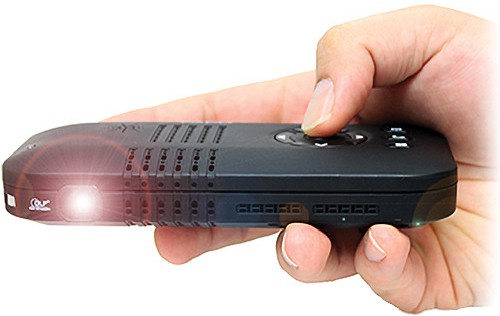
In the ideal world in that we do not live, projectors would always be utilised in complete shadow. The more ambient light you add, the longer you lower contrast and wash out the image. Even getting a brighter projector just solves the issue partially, since ambient light is blending with the darker portions of the image, which makes them cloudy. In the event that you have to use a projector at ambient light, you will never receive a perfect image, however it is possible to at least get a viewable image.
Calculating the number of lumens you desire necessitates knowing the throw space, image width, and how much ambient light is present in the room, and also the content that will be displayed. The easiest way to figure out this is to use a projection calculator, an application tool that crunches the number for you personally. Many projector manufacturers provide calculators on their websites. Otherwise, Projector Central can be just a good resource, and offers projection calculators for nearly every projector version made.
Here are a few samples of variety of lumens you should expect having.
- An living area where the lights can be turned off entirely: 1500 to 2000 lumens
- A school classroom or boardroom at which the lights may be dimmed, if not entirely extinguished: at 3000 lumens
- A lecture hall, church, along with other bigger place, or even a environment with high ambient light: at 4500 lumens
- A movie theater or stadium: 20,000 lumens or more
- Just how it’ll look in case your projector isn’t bright enough
After taking a look at the calculator, then you may have found brightness is measured in foot candles. Without a light meter, how is one supposed to know how lots of footcandles of lighting a chamber has? Here, a bit of judgment and good sense come into play. Would you think it”well lit” (50 foot candles ), moderately lit (20 foot-candles), or dimly lit (significantly less than 5 foot-candles)? Or is that there bright sunshine blazing in? If the setup is for critical viewing, then I would advise putting a light meter, and carefully quantifying. However, for many practical everyday applications, a rough guesstimate erring on the side of overly bright should burst.
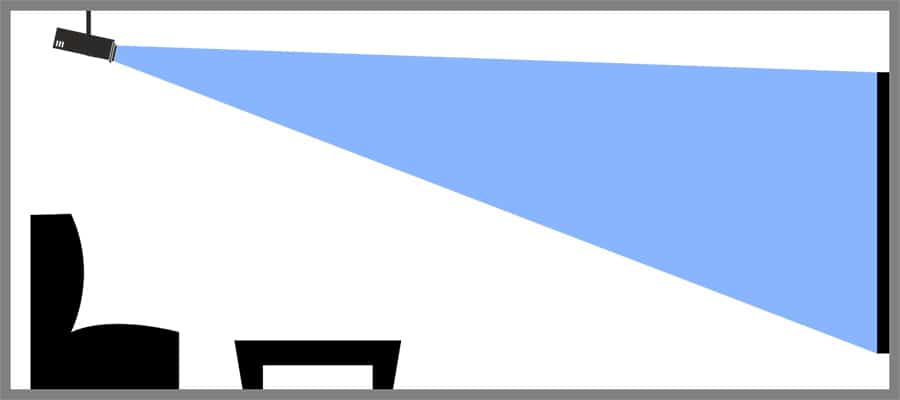
The content should also be considered. Are you currently projecting white song lyrics text on a solid, dark background? Or are you currently showing photographs in a art gallery? At the prior instance, the comparison of the image is so high you can get a way with a far weaker projector. From the latter case, you probably need to conserve every single nuance it is possible to and, therefore, will require more lumens.
If you legally do not understand at which the projector is going to be used, then get the brightest you are able that you can transfer . However, odds are, with a bit of thought you will come up with a fair quote of the atmosphere. For example, if you are a travel product rep running trainings with groups of up to 20 people at various businesses, 3000 lumens could be enough if you do not encounter windows without dividers. Should you have a room without dividers, or are attempting to endeavor outdoors in daylight, bear in mind: no projector could possibly be smart enough. You’re asking the projector to get something it only wasn’t made to do.
In the end, if the projector has been used for any kind of critical viewing, then it’s imperative that ambient light be eradicated from the setting. If that is not possible, subsequently TVs or tracks (perhaps arranged as a”video walls”) needs to be used instead. Projectors probably aren’t excellent for critical seeing to start out with, but notably not when there is light inside the place.
Shade gamut?
Unless otherwise noted, brightness specs are most likely derived from measuring the”white brightness” of their output (ANSI lumens). This can be misleading, as the manner imaging systems render color graphics can lessen the brightness. To present a more realistic value, some projectors will offer an additional”color brightness” spec.
Now you know the throw ratio and brightness, then you can consider secondary factors, such as resolution and contrast ratio.
What resolution do I need?
Resolution things, but perhaps less than you might think. Most projectors nowadays are least XGA (1024 x 768) resolution, and a 4:3 aspect ratio structure that’s become the longtime staple for giving PowerPoint presentations. A few entrylevel models continue to be SVGA (800 x 600), and also pocket projectors some times have awesome, low native resolutions that the manufacturers are coy about acknowledging. As a result of high-definition video, increasingly widescreen formats starting in WXGA (1280 x 800) and 720p are supplanting the heritage 4:3 standards.
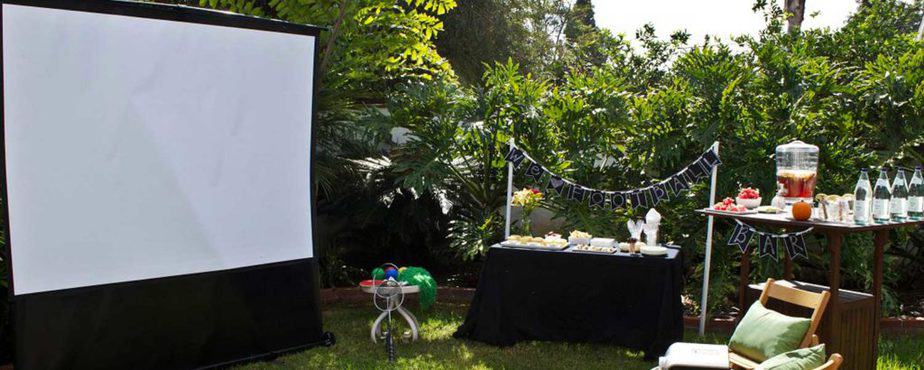
As for me, I would not suggest going lower than XGA. At SVGA and lower resolutions, pixilation from the image will be very apparent. You can cheat and set your computer’s projector output into XGA, and let the projector scale down the image to its own native resolutionnevertheless, the image can look blurry and smaller text will probably be unreadable.
In home entertainment setups, the screen-size-to-viewer space ratio is a good deal smaller than for other software –here a higher-res image pays off. Otherwise, XGA might be nice as a baseline, though going higher . Ideally, I would suggest starting at WXGA and moving upward from there. Even although you’re PowerPoint consumer, bumping up to 16:10 won’t hurt, and, you will be ready in the event that you want to screen HD video later on. For specific programs, like exhibiting photos, you want higher resolution: at least 1600 x 1200 (UXGA) to get 4:3 or 1920 x 1200 to get 16:10 (WUXGA), or even much better. Regarding home theatre, this really is a matter of whether to invest in 4K or maybe not, since almost all home theater projectors are in least Full HD (1920 x 1080), any way.
If you truly want to become scientific regarding resolution, a fast online search will turn up many resolution calculators to that you can plug in a screen size and viewing distance and the calculator will melt an answer. All these are great however, like brightness, this material really needs to be considered, and a calculator can’t do that. An exceptionally compacted YouTube video may look like sexy crap regardless of what you attempt to show it on. On the flip side, if you are piecing together a screening room to get a production organization, 4K could barely cut it.
Can I caution about contrast ratio?
Contrast ratio is probably the most meaningless spec you’ll find. Like HDTVs, projectors count on so-called”dynamic contrast” to boost their on paper performance. Dynamic contrast suggests comparing the deepest black with all the brightness turned all the way down for image A to the cleverest white with the brightness turned completely upward for image B. Contrary to TVs, the screen surface plays an import role compared to the Some screens feature high-contrast finishes at the cost of reduced viewing angles. Furthermore, any ambient light will lower the efficient contrast ratio on to the double digits. Under optimal view conditions, higher comparison (10,000 or more) is really a boon.
Growing Tech: HDR
From the context of home theater screens, HDR (High Dynamic Range) aims to become a dynamic contrast which works, also can be bolstered by a high-gamut colour space to produce images really pop. Right now, there’s a tiny format war, together with HDR 10 and Dolby Vision as different standards. On paper every provides:
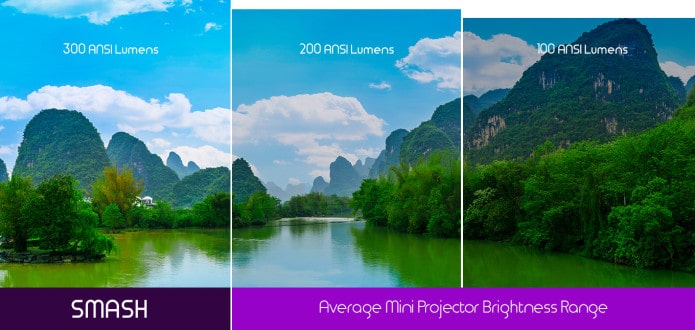
Dolby has a slight performance edge, while HR 10 benefits from being an open standard which can gain wider adoption. Obviously, there is nothing stopping apparatus from supporting both. It needs to be said that apparatus promising support for either of these standards might not offer complete support. The 4,000 nits peak brightness target, by way of instance, pertains to backlit displays, but cannot be interpreted into the projector kingdom for reasons discussed in the”Just How Much Brightness Can I Want?” Section of the report. Thus, be sure to review all of the specs, not simply the supported standards, to guarantee complete compliance.
To fully appreciate the HDR, then one will require a complete HDR series. The Blu-ray player, settop box, or loading apparatus, the projector , and also the material being played will probably need to encourage the very same HDR standard. A good example projector which affirms HDR10 could be your Epson PowerLite Home Cinema 5040UB.
Epson PowerLite home-cinema Full HD 3LCD Projector
Exactly what are keystone adjustments and lens shift?
Most projectors will have at least vertical, maybe flat, keystone correction; some even provide lens-shift. Of course, we are all familiar with the trapezoidal”keystone effect”–the image appears wider towards the top once the projector is still too lowwider on both sides when the projector is horizontally off centre. Keystone correction remedies this, up to and including certain specified percentage. The restriction of keystone correction is the fact that it is achieved digitally, such as digital zoom on a camcorder. The more you apply, the longer the image is going to be degraded. If you bracket or set the projector in order that the lens is not below the bottom of the screen or above the surface of the screen (assuming the perfect angle relative to the screen) you need to be fine. If you start becoming outside of a normal mounting situation (or are stacking or edge blending) you’ll seriously want to consider deciding on a projector with lens shift. To find lens-shift, you are most likely looking at a high-end home theater or fixed installation projector.
- Initial Picture
- Vertical Keystone
- Horizontal Keystone
DLP versus LCD: Which is better?

There are just three imaging systems utilized in the majority of projectors now: DLP, LCD, and something you might not have been aware of–3LCD reflective. Between the DLP and LCD, it’s really a tossup nowadays. LCD has no”shimmer effect;” DLP only a bit less”screen door” effect and better contrast. Apart from that, LCD has a slight reliability advantage for the reason there are no moving parts within the imaging system, whereas single-chip DLP uses a spinning colour wheel along with micro mirrors. LCD panels can still fail, but more often it is an instance of dead pixels instead of a catastrophic failure as when a DLP color wheel ceases working. If you’re using the projector at a remote setting where it can’t readily be replaced or functioned, then go LCD. Otherwise, LCD versus DLP does not need to be considered a deciding factor.
Sample of Screen Door impact
In some ways the underdog,” 3LCD Reflective–present in LCoS (Liquid Crystal on Silicon), LCoQ (Liquid Crystal on Quartz), along with SXRD (Silicon X-tal Reflective Display) variants–offers the best of both worlds. A number of you may vaguely remember HD projection TVs that’d LCoS. 3LCD Reflective is a technology that is reflective such as DLP however, in this scenario, that the light is reflected by the silicone- or quartz-backed LCD panel as opposed to micro woods. This method now asserts to make the smallest amount of screen door effect and, because it really is LCD, is free from the rainbow effect along with other color-wheel-related move artifacts.
